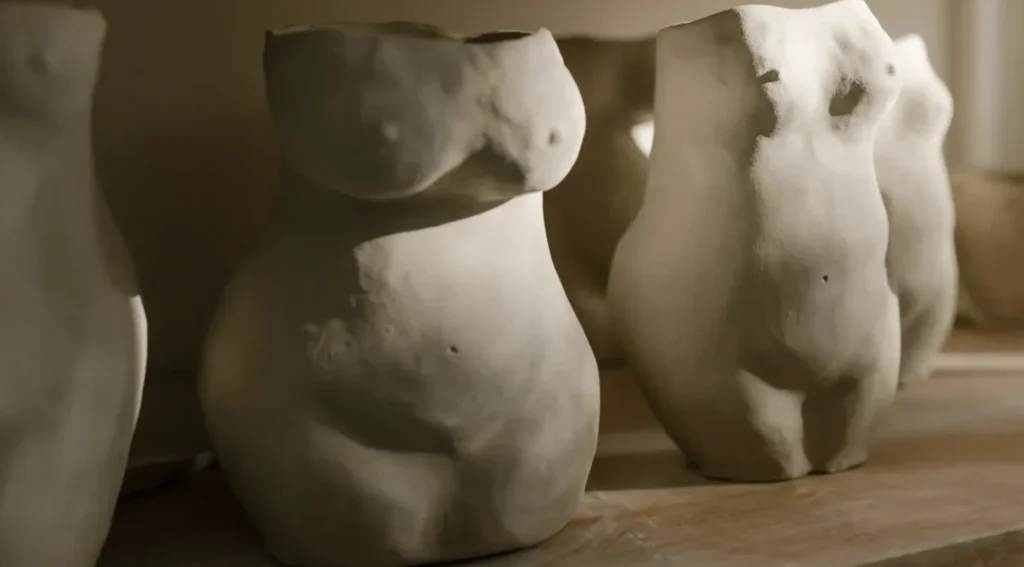Last week at the office, a recurring theme among my clients were body thoughts and body non-acceptance. While I support people in various areas of health—like digestive issues, heart disease, or navigating perimenopause—our conversations last week centered around the challenges of accepting body changes. There was resistance to how the body looks or feels, distress about clothes not fitting as expected, or frustration with changes in body size in areas where our culture tells us they “shouldn’t” be.
When someone comes in with such strong feelings, I’ll admit that I sometimes feel overwhelmed too. A part of me wants to flip a switch and make it all go away for them. But since that’s not how things work, I want to share three areas we can explore together when facing uncomfortable thoughts about our bodies. These aren’t just for changes in size but also for dealing with bodies that feel injured, tired, or aging.

1. Understanding Thoughts: Watching the Mind Without Judgment
My understanding of how thoughts work comes from my life coach, Helen McLaughlin, and one of her mentors, Amy Johnson, whose book Just a Thought has become a resource I recommend to many clients.
Here’s what I’ve learned: thoughts, whether positive or negative, can create suffering when they take us out of the present moment. Thoughts about the past, the future, or “should” statements often disrupt our peace. But here’s the key—these thoughts are not you. They aren’t created by you, and you don’t choose which thoughts pop up.
Try this exercise: tell me what your next thought will be…
You can’t do it, can you?
Thoughts about our bodies—whether they tell us our pants are too tight or that an ache in our knee means we’re “getting old”—often aren’t ours either. They might come from diet culture, something a parent or coach said years ago, or messages we’ve absorbed over time. When we recognize that we didn’t create these thoughts, we can stop blaming ourselves for them.
When an uncomfortable sensation arises, like snug pants or an ache, notice how quickly the mind jumps in with a story:
• “You’re gaining weight, and it’s only going to get worse.”
• “This pain means you’re aging, and it’s downhill from here.”
But what if we paused and simply noticed the sensation itself instead of immediately believing the thought? Sensations—whether it’s a tight waistband or a flutter of frustration—are just energy or life moving through us. They’re temporary.
The other day, for example, I was putting together a puzzle with my youngest son, who was getting frustrated by its difficulty. I could feel my own contraction. A tightness in my chest. And what wanted to quickly follow…was the thought about his future self not being able to handle “life.” However, after noticing the energy in my chest, I just let it be there and brought my attention back to my son. I reminded myself that these sensations wouldn’t last forever. And guess what? They didn’t.
The next time you have an uncomfortable sensation about your body, try to notice it as energy. Resist the urge to add thought to it, which only prolongs suffering. Just observe the wave of discomfort, and you’ll find it passes more quickly.
2. Self-Compassion: Approaching Body Thoughts with Kindness

Imagine a stray dog shows up at your door. The dog is shaking, cowering, and hungry. What would you do? You’d likely approach it gently, maybe kneel to its level, extend your hand slowly, and offer it food to build trust. You wouldn’t scold the dog or demand that it “get it together.”
Yet, when we experience discomfort with our bodies, we often treat ourselves harshly. We rush to “fix” what we see as the problem instead of approaching ourselves with the same gentleness we’d extend to that stray dog—or a struggling friend.
If a friend came to you and shared her frustrations about her thighs, her stomach, or her aging body, would you respond with judgment? Of course not. You’d offer empathy and remind her of her worth beyond her appearance. So why is it so hard to extend that same kindness to ourselves?
The next time you notice critical thoughts about your body, can you pause and ask, “What if this thought isn’t even mine?” And then, see if there is room to respond to yourself with gentleness instead of criticism.
3. Shifting the Goal: You Don’t Have to Love Everything
There’s a common refrain in body positivity spaces: “Love your body!” While well-meaning, it can sometimes feel like an unreachable standard, especially on days when we’re struggling.
What if, instead, we reframed the goal? You don’t have to love everything about your body. You can still appreciate its function and value without feeling the need to adore every part of it.
I love the analogy of my home. There are things I don’t love about it —a broken cabinet, cluttered spaces —but it still provides me warmth, safety, and a space to live. Our bodies are no different. They might not meet every cultural standard we’ve been conditioned to believe in, but they allow us to take a walk, hug our kids, or do the work that gives our lives meaning.
Could you shift from needing to love every detail to simply accepting your body as it is—a miraculous, complex vessel that keeps you alive?
A Gentle Reminder
When we stop seeing our bodies as problems to fix and instead treat them with gentleness and gratitude, we begin to soften the grip of those uncomfortable thoughts. It’s a practice, and it takes time, but it’s worth it.
Thank you for allowing me to share these thoughts with you. I hope they resonate with your beautiful hearts and your beautiful bodies.
To have a partner in this, we would love to support you! Reach out and work one-on-one with our McDaniel Nutrition dietitians. XO – Jen

